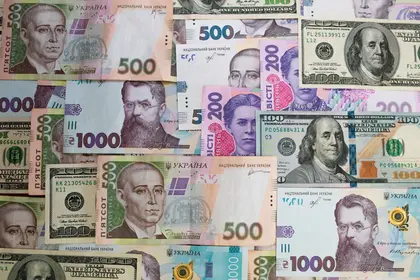As 2022 draws to a close, thousands of annual international prizes and awards are being handed out, very many of them to individual Ukrainians and the entire nation – logically and by right, for they have paid a formidable price.
But looking through the economic prism, the 2022 prize winner should be the hryvnia, Ukraine’s currency.
JOIN US ON TELEGRAM
Follow our coverage of the war on the @Kyivpost_official.
The biggest war in the last 50 years has caused Ukraine's economy to fall by 30% and millions of people to flee. Yet the national currency remains stable. Yes, it started this year at 27 to $1 and is finishing at the official 36.6 and 40 on the cash exchange market, but this can still be called stability, considering the turbulent developments and the dynamics of the dollar's exchange rate on global markets.
The national currency owes its stability primarily to the West's financial support and the policies of the National Bank of Ukraine (NBU). It has indeed proven to be a viable institution, despite reshuffles at top management or even the fact that its governor, Kyrylo Shevchenko, was pressured to resign in October after accusations of corruption. He then left the country for what he said were medical reasons and claims he is a wanted man.
The hryvnia’s stable operation is the evident result of the comprehensive reform carried out in 2015-16, which built a sustainable banking system in the place of the filthy Augean stables that were there before. Yes, it was the reform for which Valeria Hontareva, the NBU head at that time, was cursed and got her house burned, but it ensured the banking system's reliable operation even in wartime.

‘We Are Blocking Propagandists’ – Zelensky Imposes Sanctions on Pro-Russian Politicians
As for those Russian propagandists threatening to bomb Ukraine's banking system, we can only laugh at them. Such threats seem to take us back to 1917, when drunken sailors were rushing to seize banks. In the 21st century it is simply impossible to destroy the banking system with bombs. How do they think they could bomb clouds or destroy Amazon servers?
So what does 2023 have in store for the hryvnia? What will come of the apocalyptic forecasts of 50 hryvnia to the dollar?
Paradoxical as it may sound, the hryvnia is not in jeopardy. There are no factors at present that could send it into a nosedive. Of course, the war continues and anything could happen. There might be some force majeure, but barring a nuclear strike the hryvnia should remain stable.
Why? First of all, thanks to Western financial support, which has since August been synchronized, regular and sufficient, allowing the NBU to limit emissions. Moreover, its reserves keep growing and are now almost at the prewar level, even though it has to resort to interventions to balance off the capital drain. Besides, every month Ukrainian migrants spend an equivalent of $1.5 billion, but the steady influx of $4 billion cancels out these problems and those created by constant Russian missile strikes.
The EU has finally approved the 2023 financial assistance package for Ukraine which guarantees regular disbursements to the tune of €18 billion. That makes half the sum this country needs to keep afloat. The rest is expected to arrive from the U.S. and other partners. This means the positive dynamics of the recent months will persist.
However, exchange rate fluctuations cannot be ruled out: firstly, the Finance Ministry insists on devaluation (at least down to the figure projected in next year's national budget) and is likely to put pressure on the NBU. It will surely be difficult to balance the budget without letting the hryvnia fall. Secondly, exporters are likely to exert pressure as well.
Yet the processes acting on Ukraine's currency market are controllable, and next year the hryvnia is likely to stand tall and even get stronger against the ruble. But that's another story.
The views expressed are the author’s and not necessarily of Kyiv Post.
You can also highlight the text and press Ctrl + Enter










